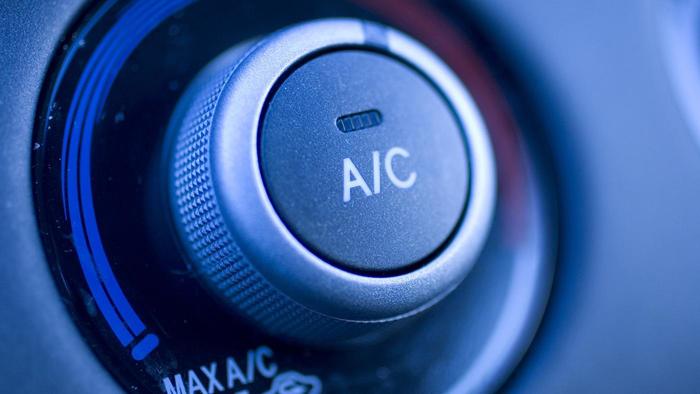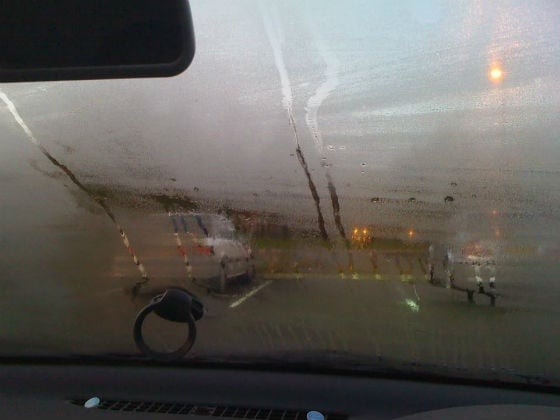Air conditioning has not always been a standard item on an automobile. The first air conditioning system wasn’t available in a car until the 1930s. Air conditioning systems weren’t widely purchased in cars until the 1970s where the option was sold on more than half of the cars sold in the US, in large part due to low resale values of non-ac equipped cars. Today, it’s hard to imagine finding a car that doesn’t have air conditioning. Most cars today that don’t have air condition came factory equipped with it, but the system has gone into disrepair and may not have worked for a long time.
Perhaps this is the case with your vehicle, and an old and unused AC compressor has seized up and left you sweating. Or maybe for you a recent test of your air conditioning system to get you ready for summer has shown you have a low pressure on the high pressure side of your compressor making your system barely work. In some cases the clutch can fail on your AC compressor so the pulley cannot transfer the power to the compressor. These are the most common causes of a failed AC compressor, but in all the cases they will require the replacement of the compressor.
How to Replace an AC Compressor
If you’re ready to learn how to replace an AC compressor, read this whole article first before you head to the garage. Replacing an AC compressor is almost as simple as replacing any other accessory on your motor like the alternator or power steering pump. The biggest difference is that before you remove the actual compressor you have to remove the refrigerant lines connect to it. There should be 2 lines, a high pressure and a low pressure line. Before you can remove these lines, you first have to remove all the refrigerant from the system. The low pressure side of your system could be from 30-60 psi and your high pressure side up to 200 psi. With all that pressure in the system, simply removing the lines full of refrigerant at those pressures can be very dangerous. To remove the lines from your AC compressor you should first have the system safely evacuated of refrigerant. Once the system is empty, removing the lines is as simple as removing a few bolts.
With the lines off, you can move onto removing the compressor so you can replace it. Start by removing the belt connecting the AC compressor pulley to the crankshaft pulley. This may be done by releasing a belt tensioner or backing down on the adjusting screw for the AC compressor or its idler pulley. Once you have the belt off, removing the AC compressor is as simple as removing the mounting bolts holding it the engine block or brackets.
After you’ve got the new compressor bolted in, you can replace the belt, and low and high pressure lines. When reinstalling the lines you should consider installing new O-rings on the lines to make sure you have a good fit and no leaks. If your AC system is old enough to need a new compressor, chances are you may have a few leaks in other places like the connection of rubber hoses to hard lines, the condenser and other connections. After you install your new compressor you will have to refill your system with refrigerant, and if there are leaks, you will slowly lose that refrigerant causing your system to malfunction again.
How do I prevent AC problems?
After you’ve installed your new compressor consider adding BlueDevil Red Angel A/C Stop Leak to your system before it is refilled with refrigerant. BlueDevil Red Angel A/C Stop Leak will remain inert in your system without damaging your new compressor or any other part of your system. When it reaches a leak point, it will quickly seal the leak by forming a chemical weld. This will help keep the new refrigerant in your system, and your new compressor working properly.
BlueDevil Products can be found on Amazon.com or at AutoZone, Advance Auto Parts, O’Reilly Auto Parts, NAPA, and other major auto parts retailers.
33 responses to "How to Replace an AC Compressor"
33 Comments
Leave a Reply
Related Articles




You make a good point about checking the rubber hoses on your AC unit before filling your new compressor with refrigerant. That way, you do not risk losing compression and refrigerant through small leaks in the hoses. Many of these things can be avoided by hiring an experienced professional to do the work. Doing so, you will avoid these types of issues and other things you might not be aware of during installation.
Before I install my new compressor in my A/c unit do I have to fill up the compressor first with freon?
Neal,
Thanks for your question about your AC compressor. You do not need to fill the new compressor before you install it, but you should install new refrigerant and oil before you start the system. The refrigerant your system uses is a gas when it is installed so it will fill the system naturally.
Thanks again for your question!
-BD Auto Pro
? Had air compressor replaced on Jeep Cherokee never looked under the hood when I left after driving it 30 miles. My car stopped I opened the hood and the radiator cap was off. What would the radiator have to do with getting the air from pressure change? And now has to be towed to a shop.. Called the mechanic he said there would be no reason to have taken off the radio or cap even though he didn’t do the work
Hello would I need to flush my system if I replace whole ac compressors unit
Malcolm-
Depending on how many miles are on the vehicle, it probably isn’t necessary to flush the system when replacing the A/C Compressor, however, you could do it to ensure the system is free of debris/foreign substances that would clog or restrict flow. Feel free to contact our technical support line at 888-863-0426 with any other questions.
Thank you!
-BDP
After you the comp.do you have to pull a vacuum on it or can you just charge it I know it dont have any leaks just a bad clutch
Rick-
It would be a good idea to pull a vacuum after you’ve replaced the compressor. If you don’t vacuum out an A/C system prior to refilling it with refrigerant you will not get maximum performance because there will be minor amounts of air (humidity/moisture) in the system. By vacuuming an A/C system, you’re reducing the pressure, so that any water in the system will boil away at ambient temperatures.
Thank you!
-BDP
If you are replacing the compressor yourself how would you pull a vacuum on the system? Is this something you can do with a house vacuum or would you need to take it to a professional to have it done?
Gladys-
Based on your description we recommend bringing vehicle in for assistance. You would not be able to use a regular, house vacuum to pull a proper vacuum on the system.
Thank you!
-BDP
Hello, I will be replacing my refrigerant valve. I know I first have to evacuate the system. How ever do I need to evacuate the system a second time after replacing the compressor valve? Is that what you mean when you said vacuum again ? Thank you. 2nd question. This question is probably a NO but, can I recycle my vacuum r134a and recharge the system after I’m done replacing the valve?
Moses-
Yes, you would want to evacuate the system after replacing the compressor valve. This would ensure all air and water vapor have been removed from the system. You actually would be able to reuse the refrigerant in the same system as long as it isn’t contaminated. Feel free to contact our technical support line at 888-863-0426 with any other questions.
Thank you!
-BDP
Thank you !
If there replacing ac compressor on my vehicle do they have to flush my radiator fluid out
Manuel-
If the A/C compressor is being replaced, it is recommended to flush the A/C and replace any non-flushable components.
Thank you!
-BDP
If I had a bypass done to my ac, but left the hoses can I go back and install a new compressir?
Marsha-
Being that the lines have already been bypassed, yes, you would be able to install a new compressor at this point. Feel free to contact our technical support line at 888-863-0426 with any other questions.
Thank you!
-BDP
I am replacing the ac dryer and compressor- can I charge the system when complete and that would be good?
Patrick-
It is important that the a/c system is flushed when replacing your a/c compressor. Once the system has been flushed and the new components have been put in, you can add refrigerant to the system.
Hope this helps!
-BDP
I replaced my compressor now pressure is to high so it does not work what do I do
Brad-
When replacing your compressor, it is important that the a/c system be flushed and that all a/c components that are not able to be flushed be replaced as well. You would want to do this prior to putting in the new compressor.
Thank you!
-BDP
I am replacing the compressor AC compressor with a kit. The mechanic didn’t see any materials inside, so they said a flush wouldn’t be needed. Once the parts are replaced, do I need to have the system vacuumed and recharge with new freon? Can this be done by just using the canned freon on the low pressure side?
Josh-
Yes, it would be advised to have them pull a vacuum and add a new can of refrigerant.
Thank you!
-BDP
Hi, I want to change the compressor and condenser of my Prius today. The compressor is dry of oil.
Do I need to flush the system?
Hope yo hear from you soon
Chris-
Thank you for asking about your Prius. Yes, you should flush the system and replace and non-flushable components when replacing the A/C compressor.
Thank you!
-BDP
Thanks, I was able to flush the valve and I replaced the compressor and condenser before I recharged the system.
The ac is chilling now. Thanks to much
Hello, I’ve just replaced my AC compressor unit because it was old. However, I did not flush out the pipes beforehand or vacuum it. The car won’t start. I bought refrigerant today but i’m not sure if I should disconnect the old pipes and drain out the old refrigerant or get it vacuumed. I can’t drive it to a shop and was hoping to do it myself. Any suggestions?
Alyssa-
Based on your description, getting the car to start would be the first thing to get taken care of. Was the car not starting prior to you replacing the compressor? It may be best to bring the vehicle to a mechanic for a proper diagnosis and to get the engine started again. Once the vehicle will start and run, you can properly recharge the A/C.
Thank you!
-BDP
It was starting beforehand but wouldn’t stay on long because of the clutch belt. I will just take it somewhere to get it checked out. But thank you!
I had the clutch to fail and damaged the nose cone so i need a new compressor and clutch. But what other parts should be replaced? someone mentioned a orifice an expansion valve i believe. i will replace o rings between ac comp and Freon lines and also vacuum the system and add pag oil if new comp does not have it pre installed?
I have a 2011 chevy impala 3.5 with about 180,000 miles on it, I’m replacing the ac compressor but I’ve been seeing different things regarding whether or not you should replace other things or just the compressor, any advice would be appreciated.
Tristan-
Thank you for asking about your Chevy Impala. Depending on the need for replacement of the a/c compressor, you could also possibly need to replace the dryer, orifice tube, expansion valve. Typically, you would want to flush the a/c to remove any grime/debris and replace and non-flushable components. Hope this helps.
Thank you!
-BDP
My clutch pulley is locked up on my ac compresser. I’m in Walmart parking lot. I have a new compresser. Can I put it in so I can make it home 200 miles without flushing or recharging if I don’t try to use it?